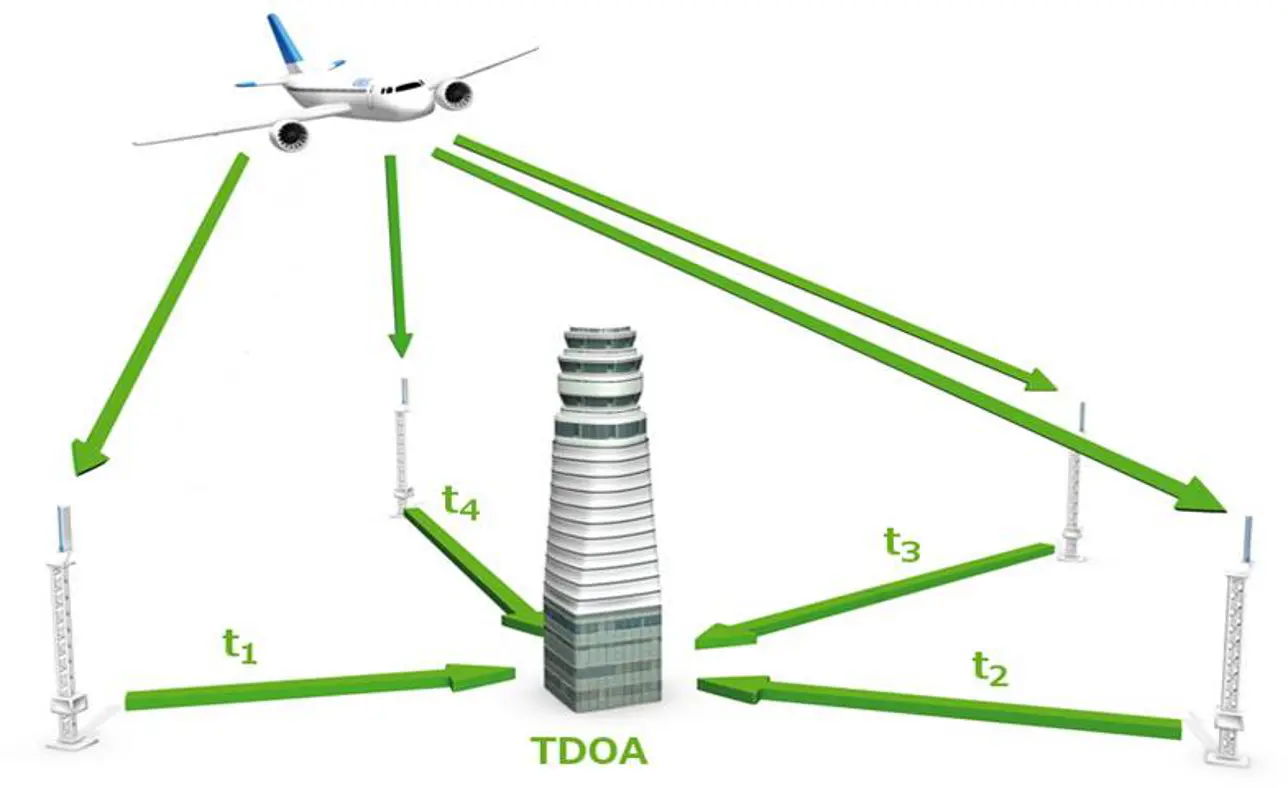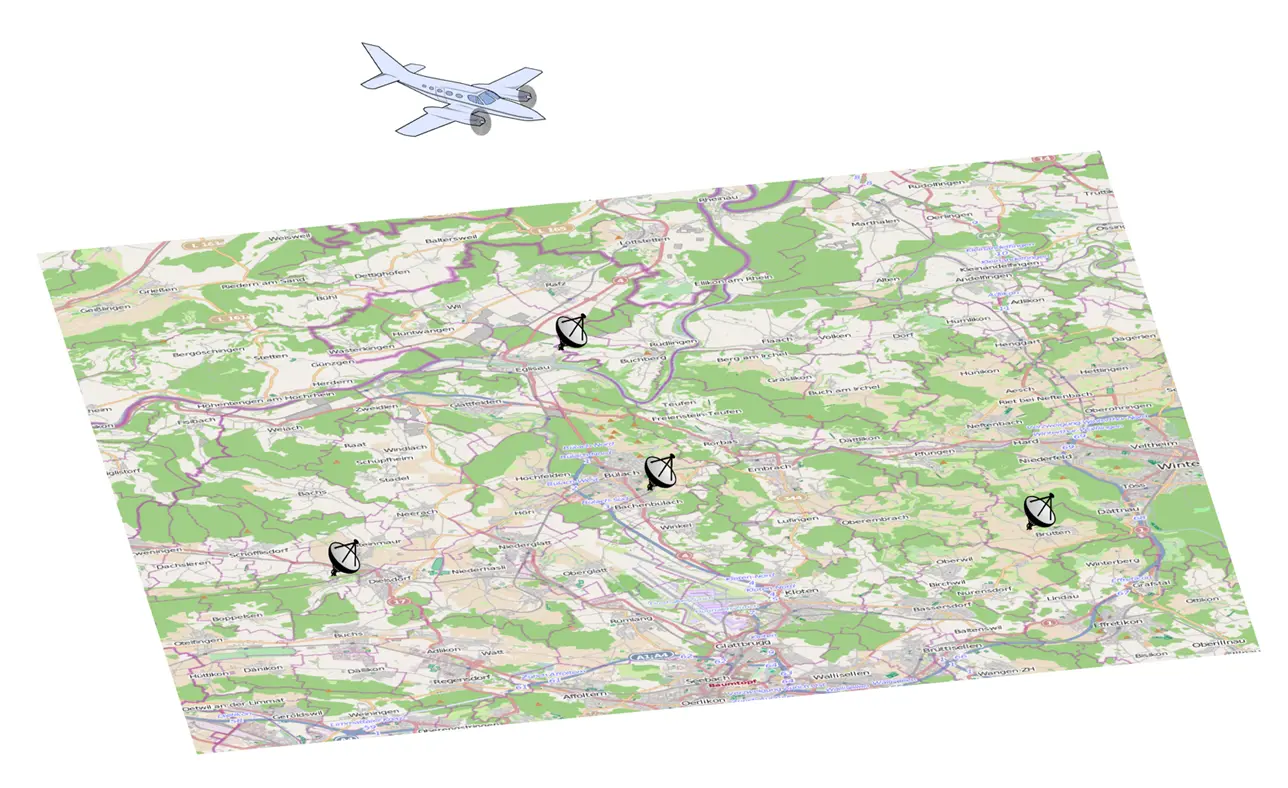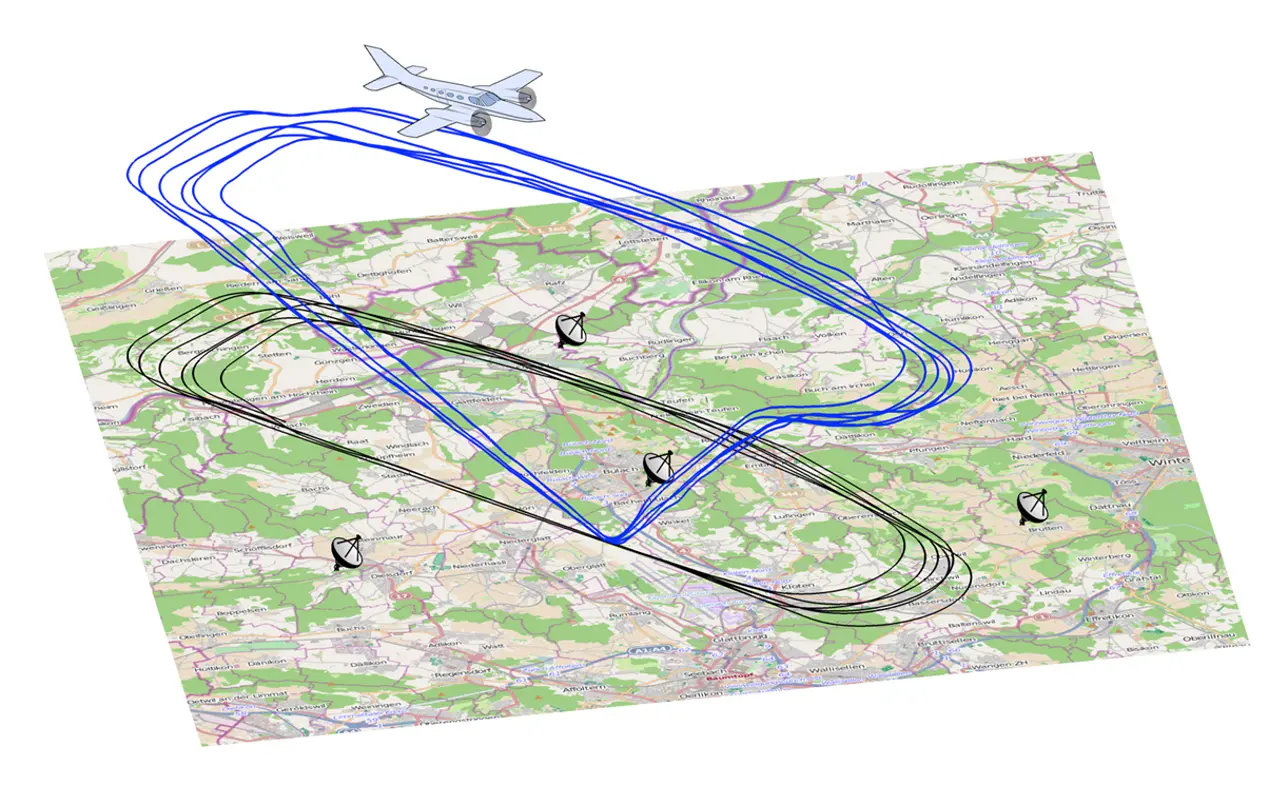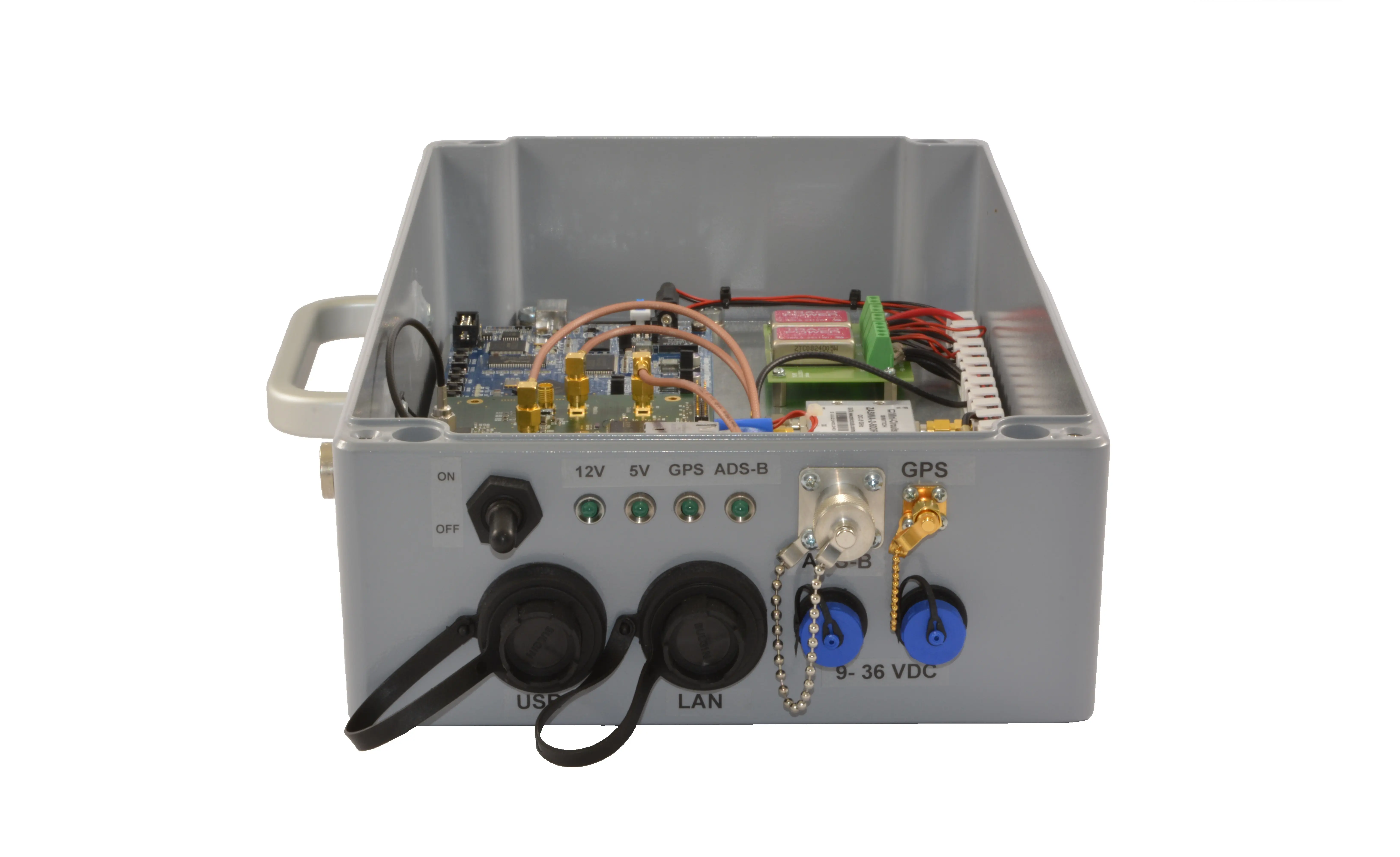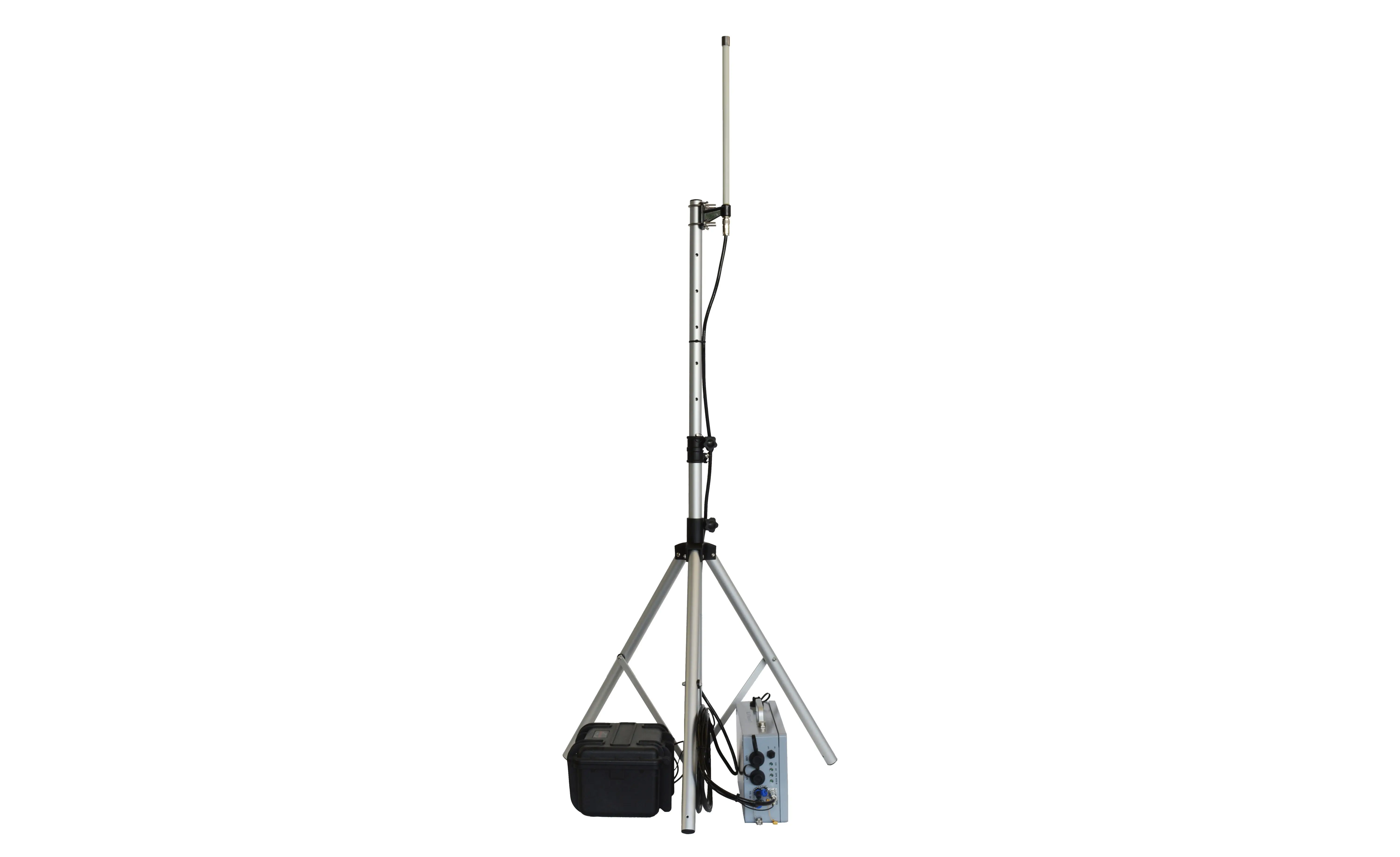Aircraft multilateration (MLAT)
Position determination of commercial aircraft
In close cooperation with our industry partner Skyguide, which is responsible for securing and monitoring Swiss airspace, a mobile system for accurate positioning of commercial aircraft was developed at ZSN (since 2018: ISC). In contrast to conventional radar-based systems, in this project we use the principle of multilateration to determine the position of the aircraft. In this method, the status messages transmitted continuously and automatically by each commercial aircraft, so-called ADSB telegrams, are detected by various spatially distributed high-frequency receiver stations and provided with a highly accurate time stamp. The position of the aircraft can then be calculated very precisely from the transit time differences of these ADSB telegrams. In various practical tests around Zurich Kloten Airport, a horizontal position accuracy of about 8m was achieved.
One of the special features of our mobile positioning system is that it does not depend on radar and can be transported, set up and operated by a single person. As this system can easily be operated with batteries, it is excellently suited for use in impassable and difficult-to-access locations where no power supply is available. Due to its high accuracy - combined with very low acquisition and maintenance costs - this system has numerous practical applications, for example in the development of new aircraft noise models or to support radar at airports.
From radio frequency receiver to visualization of the flight path
This interdisciplinary project combines exciting issues from a variety of different technical fields. For example, the development of the radio frequency receivers, which are able to detect and store the ADSB telegrams transmitted by the aircraft on a frequency of 1090MHz and to provide them with a highly accurate time stamp in the range of a few nanoseconds, combines interesting aspects of the fields of radio frequency engineering, electronics and digital signal processing. The efficient processing of the stored ADSB telegrams, the accurate calculation of the aircraft position, the comparison with measurement data and the visualization of the flight path are also very challenging technical problems that include many exciting aspects from the fields of software design, big data, parallel computing and aviation.
